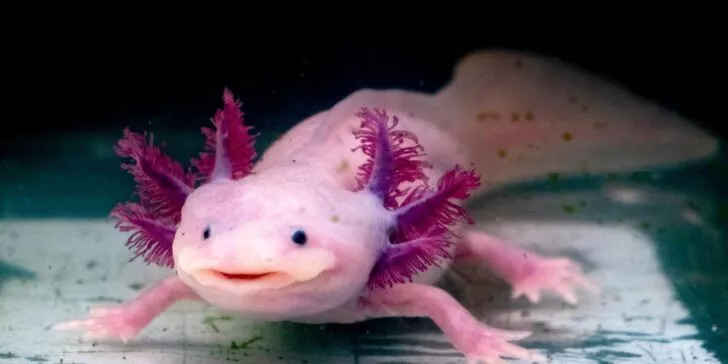The axolotl is a curious creature that has become a world fascination and popular pet choice.
These creatures originate from Mexico and have been bred in captivity for many years.
Due to their happy smile and never aging appearance, these have become globally recognizable and loved for many reasons.
But do you ever wonder why there is such an interest in this quirky amphibian?
Here are ten fantastic facts about axolotls that will make you want your own as a pet.
Axolotls are native to one place in the world.
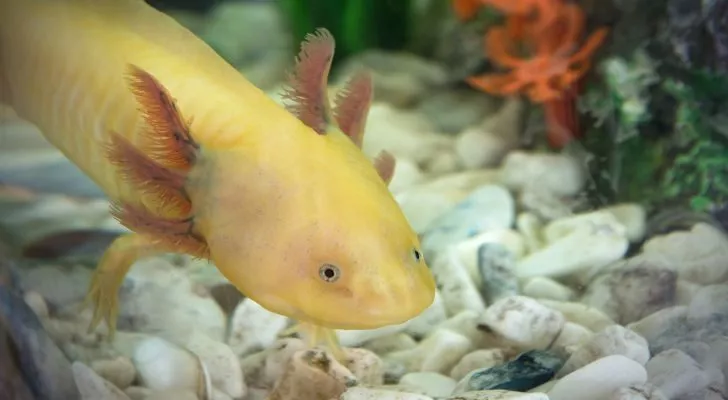
The axolotl can only be found in one place in the world, Mexico City.
They’re only native to two high-altitude lakes, although, sadly, due to one of the lakes being drained because of flooding, they can now only be found in the wild in one.
Lake Xochimilco in southern Mexico City is the only place where they still exist in the wild.
Their numbers are decreasing due to the introduction of predatory carp and tilapia.
They never show signs of aging!
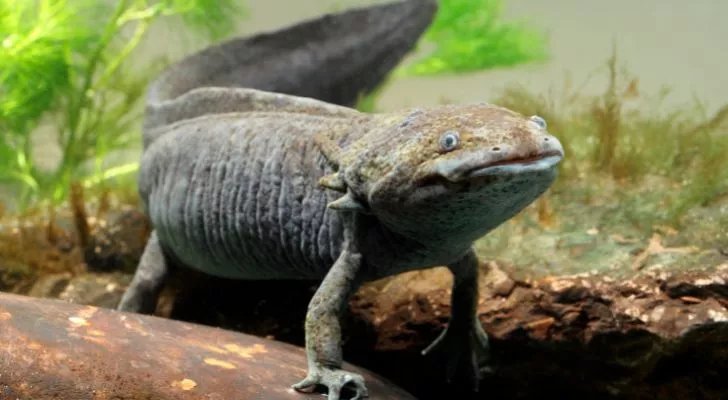
These unique creatures are part of the salamander family. However, unlike all other salamanders, they don’t undergo metamorphosis.
Metamorphosis is the transition from being a juvenile form to an adult.
Axolotls never outgrow their larval stage, and this is called neoteny.
Axolotls are carnivores.
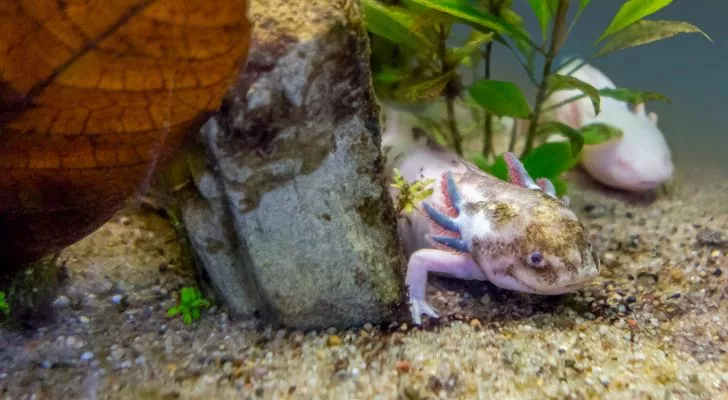
Their diet consists of crustaceans, worms, small fish, and insects.
They suck their prey through their sweet smile, almost like a vacuum.
Due to not undergoing metamorphosis, they never grow teeth, so everything has to be filtered through their smile.
Axolotls will eat anything regardless of whether it is dead or alive.
Young axolotls have been known to be cannibalistic and eat the limbs of their fellow species.
This curious creature comes in a variety of colors.
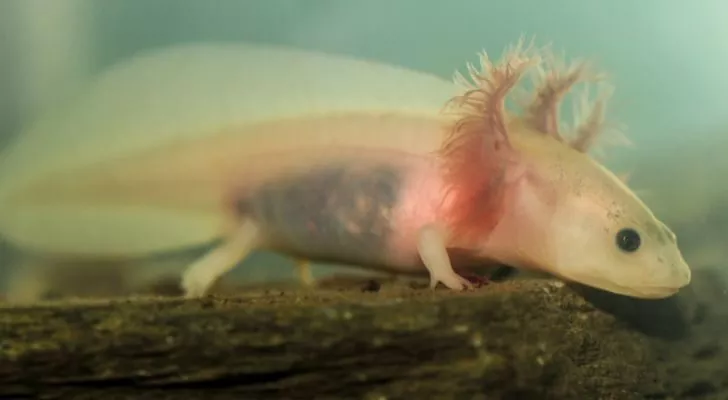
Most axolotls we see online or in pet stores are white with pinkish features. However, in the wild, they can be completely different colors.
They tend to be brown or black with olive green or gold patterns.
The lighter-colored axolotls that we are perhaps more familiar with are bred to be this way.
These are often the albino, pink, and leucitic species, which have reduced pigmentation in their skin.
The above traits are rarely found in axolotls in the wild.
Axolotls were first brought to Europe in 1864.
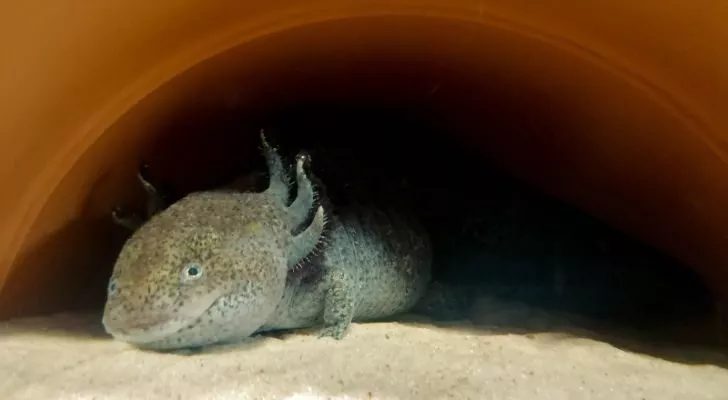
Axolotls originate in Mexico, but they have since become a global phenomenon.
They were first taken to Paris in 1864, where the pet trade for these creatures began.
The first exports were for laboratory use to study their ability not to undergo metamorphosis. But during this process, they thrived in captivity, where the potential for the pet trade began.
They bred well and fascinated people, so they became a widespread curiosity to add to an aquarium.
Finding a mate involves dancing.
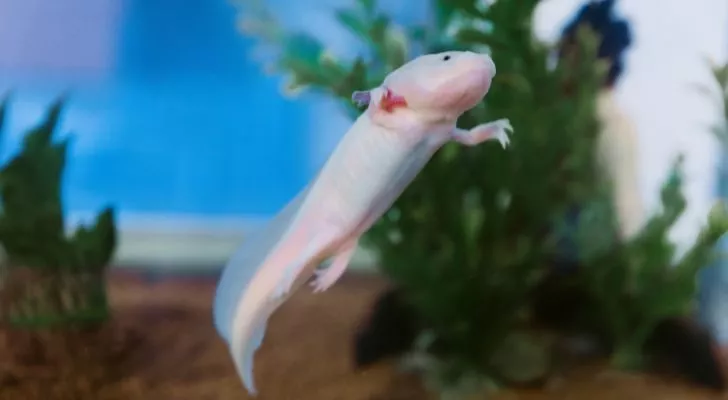
Just when you thought they couldn’t get any cuter, they dance with their mates during courtship.
When they reach sexual maturity at one year old, they search for a mate.
February is the mating season, so when the male is ready, he performs the ‘hula’ dance.
The dance involves shaking his tail and lower body. If a female is interested, she will begin to nudge him with her snout.
Axolotls can regenerate new body parts.
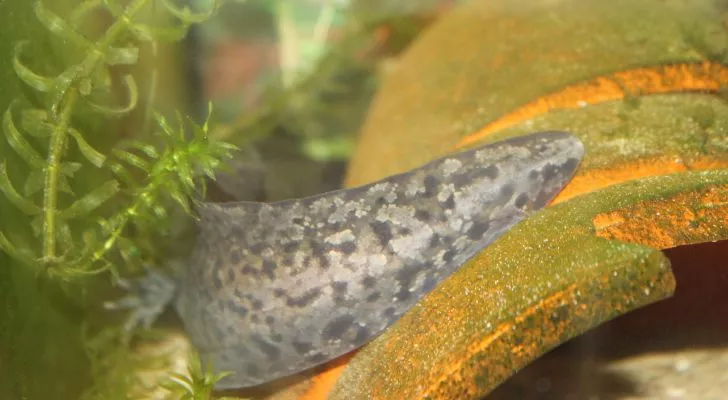
Like salamanders, axolotls can grow new limbs and tails like other amphibians, such as fish.
What makes them different is that they can also regenerate their jaws, skin, spinal cords, and organs.
This is a rare and unique capability not seen elsewhere in the animal kingdom.
The ability to regenerate has intrigued scientists for many years, and research has been conducted to see how they do it.
The axolotl is the Aztec god of fire and lightning.
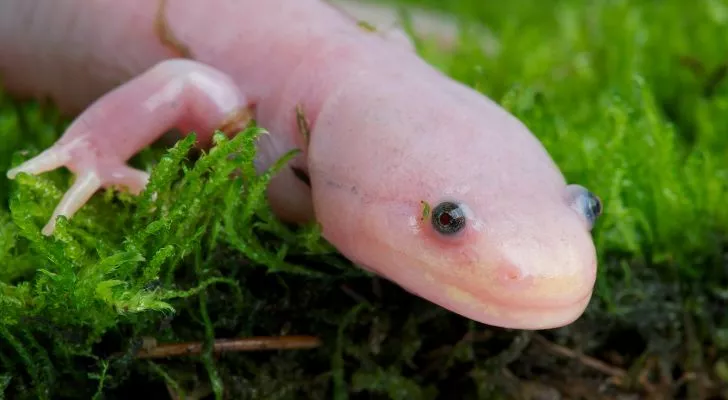
In the Aztec world, the legend is that Xolotl, the god of fire and lightning, transformed into an axolotl.
The legend is that he used this disguise to hide from being sacrificed.
Axolotls appear regularly in Aztec culture and have been around for millions of years.
They are an endangered species.
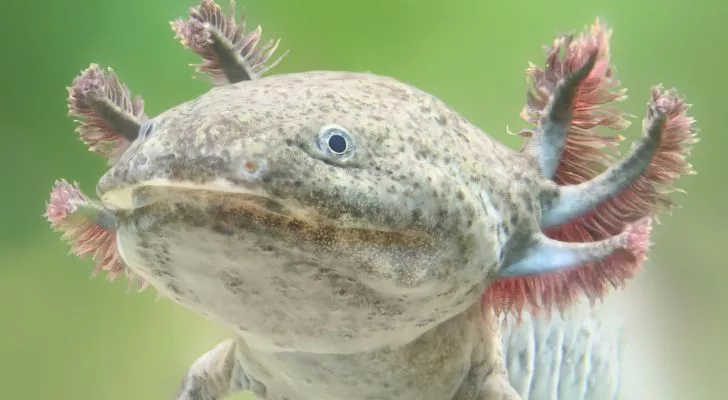
The axolotl is an endangered species, primarily due to the loss of natural habitat.
As mentioned above, axolotls are only found in two lakes in Mexico City. But due to one being drained, there is now only one place on earth where they have to live outside of captivity.
As of 2022, it’s estimated that there are only between 700-1,200 left in the wild.
The Mexican government has been working on restoring their natural habitat in freshwater.
They are also working towards creating ecotourism sites where tourists can enjoy looking at these natural wonders.
Axolotls are banned as pets in some US States and Canadian Provinces.
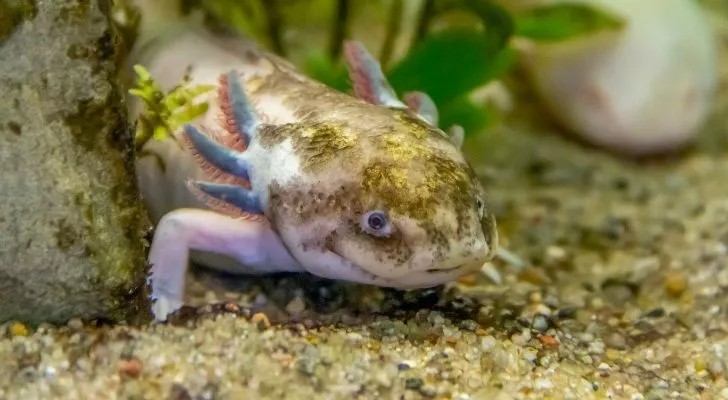
This may be a surprise, but it is illegal in some states of the US to own an axolotl as a pet. Each state has different reasons, but the main reason is the risk of them entering the wild.
If axolotls were released into the wild in many states, they could potentially damage the environment.
Mostly likely endangering native species of salamander, such as the California Tiger Salamander.
Other states, such as Hawaii, require you to have a permit if you wish to keep one as a pet.
The axolotl has grabbed our attention for millions of years due to its fascinating regeneration qualities.
From the Aztecs to the Parisians in the 1800s, axolotls have been admired as a unique species.
Axolotls have become endangered in the wild due to their natural habitat disappearing. But they continue to thrive in captivity.
Next time you visit an aquarium, why not see if you can catch one of these curious creatures smiling at you.

